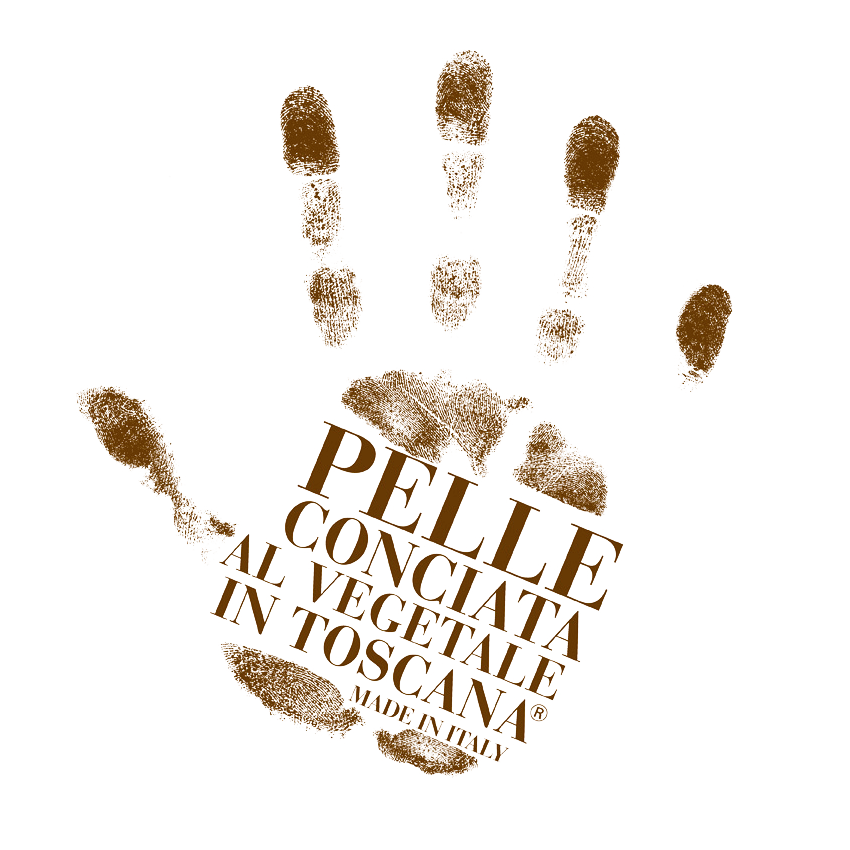Vegetable Tanning
Vegetable tanning is an artisan tradition that the Tuscan tanneries have handed down from father to son for centuries, mixing antique recipes and state-of-the-art technology.
The transformation from raw hides into a material that will resist throughout time is a process that slowly happens into wooden drums, in full respect of man and the environment. An astonishing process based on the use of natural tannins extracted from trees, on modern technologies and machineries and on the slow passing of time.
Among the various tanning methods, the vegetable tanning is still nowadays the most traditional, the most recognizable, the only one able to give leather unique characteristics. It is able to join comfort and look, fashion and tradition, uniqueness and versatility of the product.
Vacchetta leather does not lie, it is not afraid to be the testimony of time.
The vegetable tanning process is based on the use of tannin, active ingredient responsible for the transformation of the animal hide into a compact and resistant material durable through the years. This natural substance can be found in many different trees and vegetables, in variable concentration according to the different species. These natural tannin extracts make the vegetable-tanned leather unique and easily distinguishable.
Vegetable-tanned leather absorbs the traces of our life, it matures without ruining. The natural ageing does not compromise its resistance. It reveals the signs of time and use as the most personal expression of naturalness and truth. The colors of tannins give the leather an unmistakable warm and brilliant shade that becomes more intense with the passing of time and the daily use.
Choosing a product made of Tuscan Vegetable-Tanned Leather means choosing a one-of-a-kind object that reflects the owner’s lifestyle.
No leather looks like any other, its peculiar characteristics offer a wide range of possible interpretations in shape and design. Designers can find a material able to add value to a project of fashion, consumers can find a product overcoming fashion and trends and gaining value with the passing of time.
Vegetable tanning is a tanning process taking inspiration from nature and – in full harmony – to nature going back.
Vegetable-tanned leather does not contain any toxic substance harmful to man and is highly tolerable for those who suffer from metal related allergies.
Vegetable-tanned leather productive cycle is strictly monitored to ensure a low impact on the environment:
No animal is killed for its skin. On the contrary, the raw hides used by our tanneries are the discarded by-products of the food industry producing meat for human consumption.
Being tanned with natural tannins, a vegetable-tanned leather object can be easily disposed of at the end of its life, thanks to its chemical-biological characteristics.
Our tanneries have made huge investments in depuration systems and waste recycling that make them work in full respect of man and the environment.
Many of the substances used during the tanning process are recovered, recycled and reused in different fields. Hair removed from raw hides is transformed into agricultural fertilizer; sludge produced by the depuration plants is reused in the construction field to make bricks.
Vegetable-tanned leather, recognizable from its trademark, does not contain any toxic substance such as azo-dyes, nickel, PCP or chrome VI
Finally those consumers who care about product’s quality and environmental protection have a reference trademark when they buy their leather products!
Source : Consorzio Vera pelle Italiana





